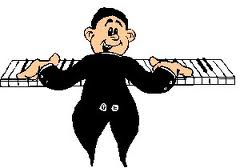

Welcome to my website. I am David Gledhill, keyboard player and teacher on the South of the Isle of Wight. I teach both classical and all styles of popular music. There is information about my teaching here: https://www.musicteachers.co.uk/teacher/76ca75bfc3c726b77988
I have recorded examples of various styles and pieces that I use for teaching here: https://soundcloud.com/user1297022
Feel free to contact me for more information if needs be or if you want me for gigs, sessions or dep work. My email is [email protected] and my phone is 07810711604.
In order to progress well it’s important a student has a good instrument to practice on. Electronic instruments as ubiquitous these days and many of them are suitable for practicing on. They are often reasonably priced and with headphones allow private practice and many are portable.
Most students, as they progress, will need to upgrade so buying second hand may be a good option. If you do make sure that it will be possible to buy spare parts. Roland and Yamaha are very good at supporting older models, and many of their better 20 year old models can still sound good! But it is worth checking for parts availability just in case, before spending on an old keyboard. There are many old Technics keyboards on the market, and they can sound good, but I hear that parts are very rare though...
Here are some things to look out for when choosing a keyboard. For a small fee I am always happy to go with students to try out!!. Make sure if you buy a keyboard you are sure you know what you do and don’t need! Some points to bear in mind when looking.
First you need to test that the keys are accurate in triggering, ie the amount of pressure and/or the distance you push to trigger the sound should be consistent over the whole keyboard and should be the same every time. On 2nd hand keyboards wear and tear may cause inconsistencies. Cheaper keyboards are more likely to wear in this way.
For most sounds (but not organ), velocity sensitivity is important, esp piano. This means the harder you hit a note the louder it sounds. This is important to have at all stages of playing as it helps to develop ‘touch’, ‘sensitivity’. As above make sure that it is consistent over the whole range and is consistent. The only real way to tell really is to play it for a while!
A weighted keyboard has the same hammer action (or more often a mechanical simulation) of an acoustic piano. If you want to play mainly piano, especially classical and jazz it is worth having this sort of keyboard usually found in a digital piano but not many smaller keyboards. This sort of action is not really suitable for organ playing though. A good compromise is semi-weighted.
For a realistic piano sound it is also important to have a sustain pedal. As well as helping with phrasing, making notes still sound when the hands are doing other things, on a piano setting using the sustain should give a richer sound so is particularly useful for chords This is because on an acoustic piano the sustain action lifts the damper from all the strings and this causes even the notes that are not played to resonate with those that are sounding and hence give this fuller sound.. Most recent electric pianos and keyboards simulate this fairly well, but check that it does if buying an older keyboard.
Not all keyboards come with a pedal as standard, but many will have a socket at the back in which you can plug a pedal into. They are not expensive 10 pounds and up for a simply foot switch, although the better ones, that resemble the pedals on an acoustic piano are around 25 and up new. You need to check the polarity is correct, (if it is fixed on both keyboard and pedal, you may have problems! If it is adjustable, then you should be ok!)
Some better acoustic/digital pianos and keyboards have also a sostenuto (3rd) pedal, or at least a setting for that. This is useful in some advanced classical, and also in a band situation when you are eg playing multiple parts. (This works like sustain, but instead of sustaining all notes it only sustains those that were played at the time it was first depressed. This is handy for keeping a chord sounding while the pedal is depressed and then using the same hand to play something else. The chord will sound all the time that the pedal is held, but the other notes played after depressing the pedal will not run together.)